Bigleaf aster (
Eurybia macrophylla) is an extremely adaptable and reliable native plant that thrives in partial shade and average soil. Common throughout the deciduous woods around the Great Lakes, it can form substantial stands of large, heart-shaped-leaved masses.
This aster typically flowers earlier than most other asters; the white to light pink flowers can open as early as mid-July but more often than not in mid- to late August. And what a great time of year to add color to the shade or woodland garden — all of the punch and pizzazz of the spring-flowering woodland plants are long over with. Bigleaf aster looks great even when not in flower too, forming a dense mass of large, dark green leaves that complement delicately textured woodland plants such as ferns.
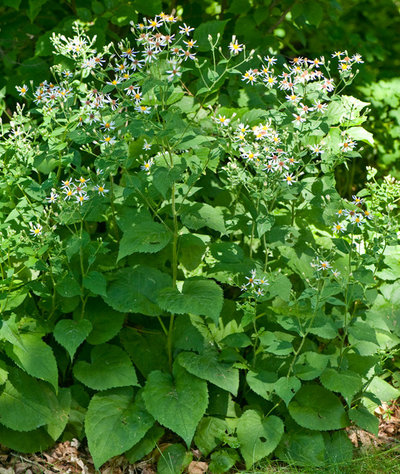
Holm Design & Consulting LLC
Botanical name: Eurybia macrophylla (syn.
Aster macrophyllus)
Common names: Bigleaf aster, large-leaved aster
Origin: Native to all of eastern North America, from Saskatchewan east to Quebec in the north and Missouri southeast to Georgia; the native range centers around the periphery of the Great Lakes, but there are occurrences through the Appalachian Mountains in cooler, higher-altitude sites
Where it will grow: Hardy to -45 degrees Fahrenheit (USDA zones 2b to 6a; find your zone)
Typical plant communities: Deciduous woodlands and openings
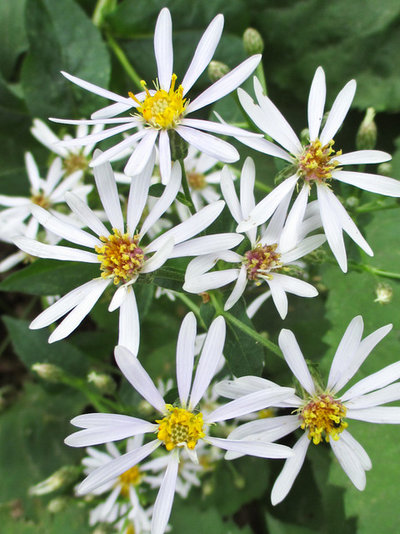
Holm Design & Consulting LLC
Soil requirement: Wet-mesic to dry-mesic, sandy-loam to clay-loam soil
Light requirement: Partial sun to partial shade
Mature size: 2 to 4 feet tall and 1 foot to 2 feet wide
Benefits and tolerances: Tolerates most soil types except extremely dry soil; shade tolerant (grows best in partial shade)
Seasonal interest: Light pink to white flowers from mid-July until mid-September
When to plant: Spring or late fall
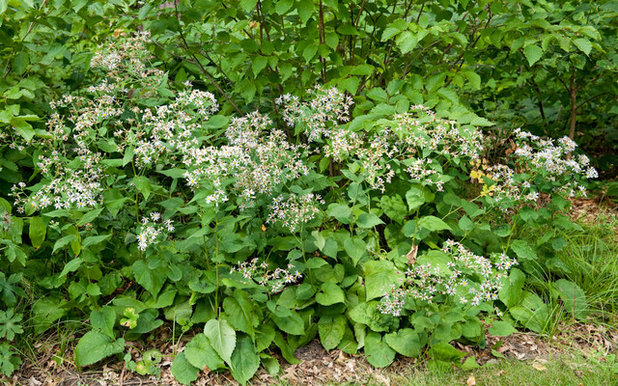
Holm Design & Consulting LLC
Distinguishing traits. Not surprisingly, bigleaf aster has very large, heart-shaped basal leaves, and the leaves on the flower stalk rival the basal leaves in size. This native plant fills an important void in the woodland or shade garden in late summer, flowering for over a month. The flower stalks are upright, sturdy and covered with clusters of small, white to light pink flowers.
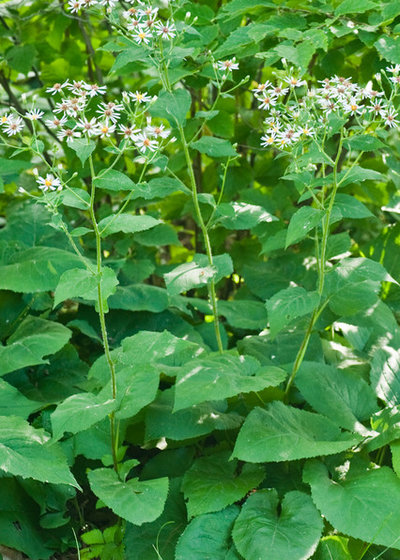
Holm Design & Consulting LLC
How to use it. Bigleaf aster works well in any woodland or shade garden with average soil. It is rhizomatous and forms a mass or cluster of plants. The large basal leaves are attractive in their own right throughout the spring and summer, complementing neighboring shade plants that typically flower earlier in the season.
Use it on the edges of woodland plantings, in rain gardens in the shade or in large sweeps throughout a woodland understory.
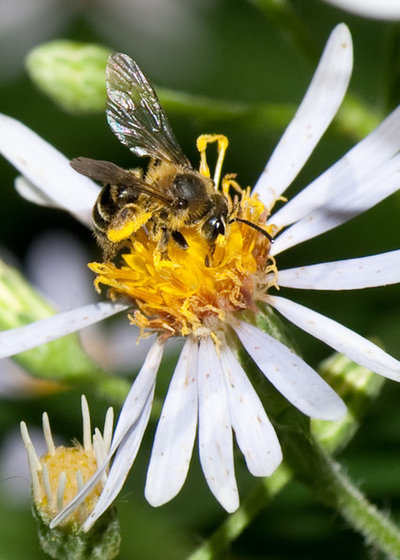
Holm Design & Consulting LLC
Planting notes. This aster is a nice, compact aster that does not require staking or cutting back midseason to keep it compact. Dormant, bare-root plants, small plugs and 4-inch containers are typically available for sale from Midwestern native plant growers. Since the plant is rhizomatous, space the plants 18 inches apart because they will fill in quickly.
After you’ve established your own bigleaf asters, collect the seeds in the fall (September to October) when they’re mature and store them in a cool, dry place for the winter. Sixty days prior to sowing the seeds in the spring, remove the fluffy pappus and put the seeds in the fridge in a sealed bag in damp sand. Sow them after the 60 days of stratification in sterile potting soil or directly outdoors when the soil is frost free. Seeds collected in the fall can also be sown right away for a natural winter stratification.
Shown: Mining bee (
Andrena sp)
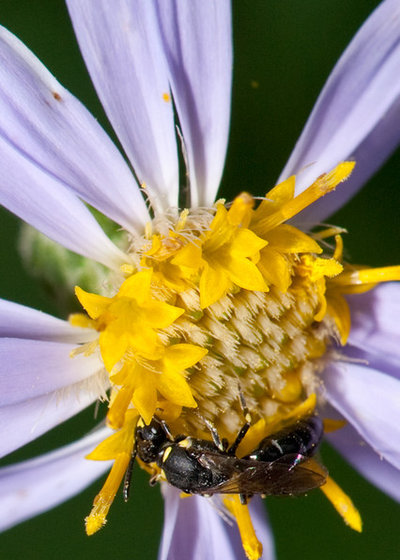
Holm Design & Consulting LLC
Pollinator notes. This native plant fills an important void in shaded landscapes needing garden color but also helps pollinators seeking forage. Bigleaf aster flowers attract a variety of pollinators, including butterflies, moths, syrphid flies and bees. The native plant is a larval host plant for the pearl crescent butterfly (
Phyciodes tharos) and the goldenrod hooded owlet moth (
Cucullia asteroides).
Small bees, including yellow-faced bees (
Hylaeus spp, shown) and small sweat bees (
Lasioglossum spp), regularly visit the flowers. These short-tongued bees can easily access the nectar on bigleaf aster’s flowers. Bumblebees (
Bombus spp) and mining bees (
Andrena spp) are also common; many species of the latter are aster specialists.





